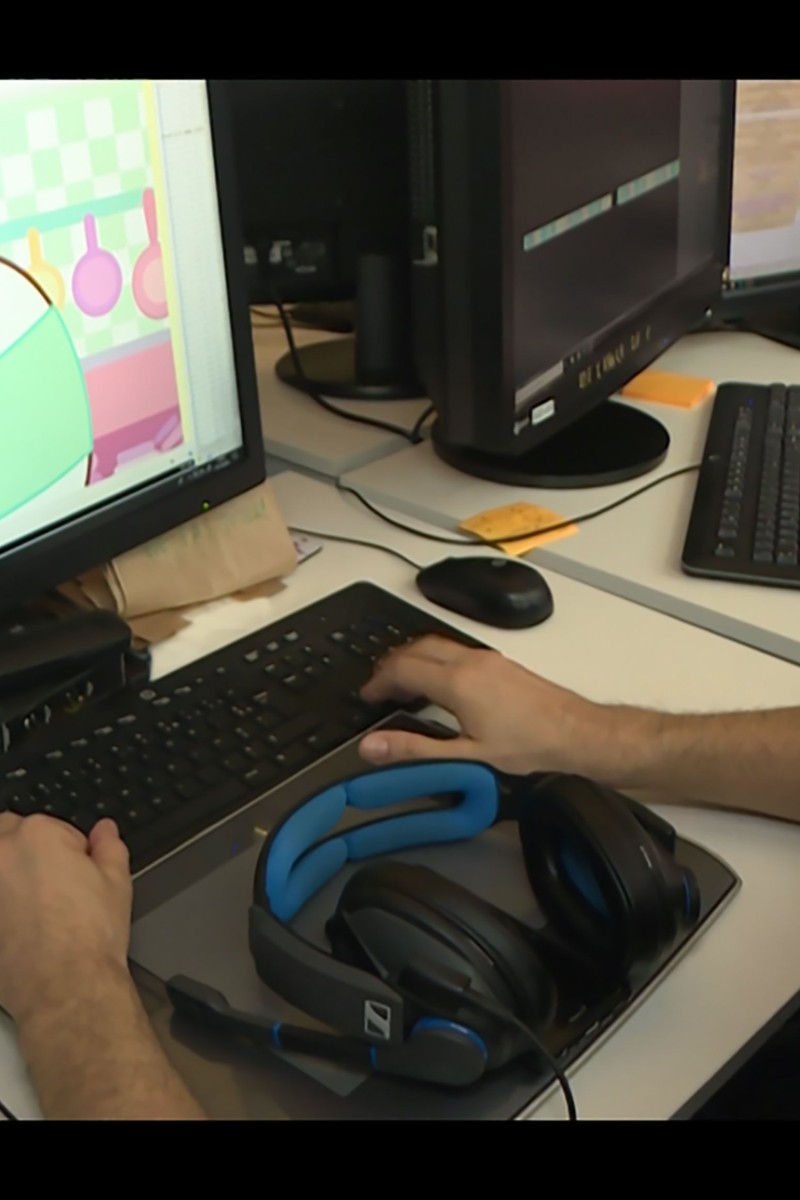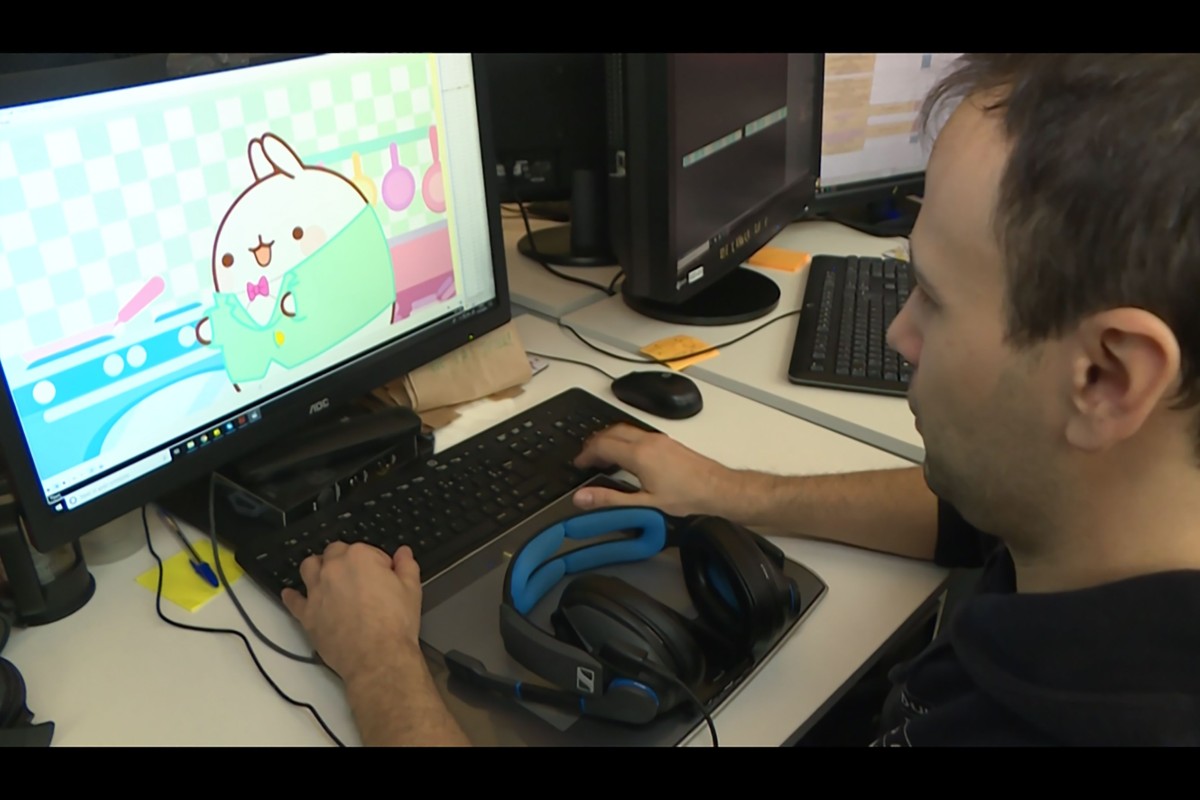
Molang the cartoon bunny is conquering Netflix, Disney, McDonald’s and more
The chubby rabbit, along with best friend Piu Piu the chick, started out as a cute emoji on South Korean messaging app KakaoTalk
 Making Molang: You’d think drawing the cutest and roundest of bunnies would be easy but think about it? He’s round and his paws are very tiny, so artists use a clever trick so that he can make those moves.
Making Molang: You’d think drawing the cutest and roundest of bunnies would be easy but think about it? He’s round and his paws are very tiny, so artists use a clever trick so that he can make those moves. A giggly white rabbit called Molang who loves cuddles and helping friends is grabbing a load of attention as a rising global children’s megastar.
The smiley fun-bun began life as an emoji in South Korea before Millimages, an animation studio in France, made him the star of his own quirky kids’ series.
The fluff ball of cuteness is adored by preschool children, teens and adults alike with the cartoon character now seen in 190 countries, including the mainland, as well as on Disney and Netflix.
5 powerful life lessons we can all learn from Disney’s The Lion King
“Molang is a big, round rabbit, who is extremely positive, imaginative and enthusiastic,” said Marie-Caroline Villand, who developed the animated character from the emoji created by Yoon Hye-Ji. The creature now has around 100 people drawing his adventures.
The storylines are simple. Molang and his best friend, a chick called Piu-Piu, are forever getting themselves into a tizz in five-minute adventures that always end with a smile.
The rabbit and his pal speak a made-up language that Villand says is quite easy to understand. “Molangese”, as she calls it, is a mix of French, Italian and Russian with a few words that don’t mean anything. Stories are very simple and, because the language is so easy, fans quickly understand what the characters are saying.
“Bah kah ki kou?” means either “What is it?” or “What are you doing?”, depending on what is going on the screen and “Ko te ta da ki!” means “I have an idea!”.
Although the character appears to be a basic drawing, chief animator Nicolas Marrocco said its creation is not without problems.
“It’s easy because they are all just little balls, but because of their shape, some actions are very difficult to do,” he adds. “For instance, how do you touch your head when you have such tiny arms?” The answer is by cleverly moving the arms around Molang’s back.
The studio picked up the worldwide rights for Molang in 2014, and the first series aired on France’s Canal+ channel in 2015. At the time, people questioned whether the cartoon would be a success, saying children weren’t interested in empathy and friendship.
But the rabbit leapt to global fame with more than 200 million people falling for his happy and friendly personality.
Netflix's 5 best animated shows that will make you want to binge watch all weekend
Grown-up appeal
Villand believes his rabbity appeal is why people become enchanted by him. Kids and adults love him not just because of his cuteness but also because of the way the stories are written, and the clever cultural references. “It is very modern and the writing means it can also speak to a more grown-up audience,” she added.
Molang has now hopped his way to the top of children’s entertainment alongside megastars like Peppa Pig, Hello Kitty and the Moomins, in record time.
What’s next?
His cuddly appeal is jumping off screens, to become your next favourite huggable toy, a move which is sure to be a big money earner for the animation studio.
Millimages have high hopes for the Molang franchise with hundreds of cute super-soft toy versions of the rabbit and his friends decorating the studio. Its “My Best Friend” merchandising brand goes from toys to towels. McDonald’s has adopted the character on its children’s menus, as have Korean railways for their express trains.
Fame also means the storylines in the lovable bunny’s fourth series, released last November, are longer. In one episode, the friends even go to the court of “Sonny El Magnifico”, a rabbit version of the French “Sun King” Louis XIV who built the spectacular Palace of Versailles. Longer, maybe, but no less adorable.
